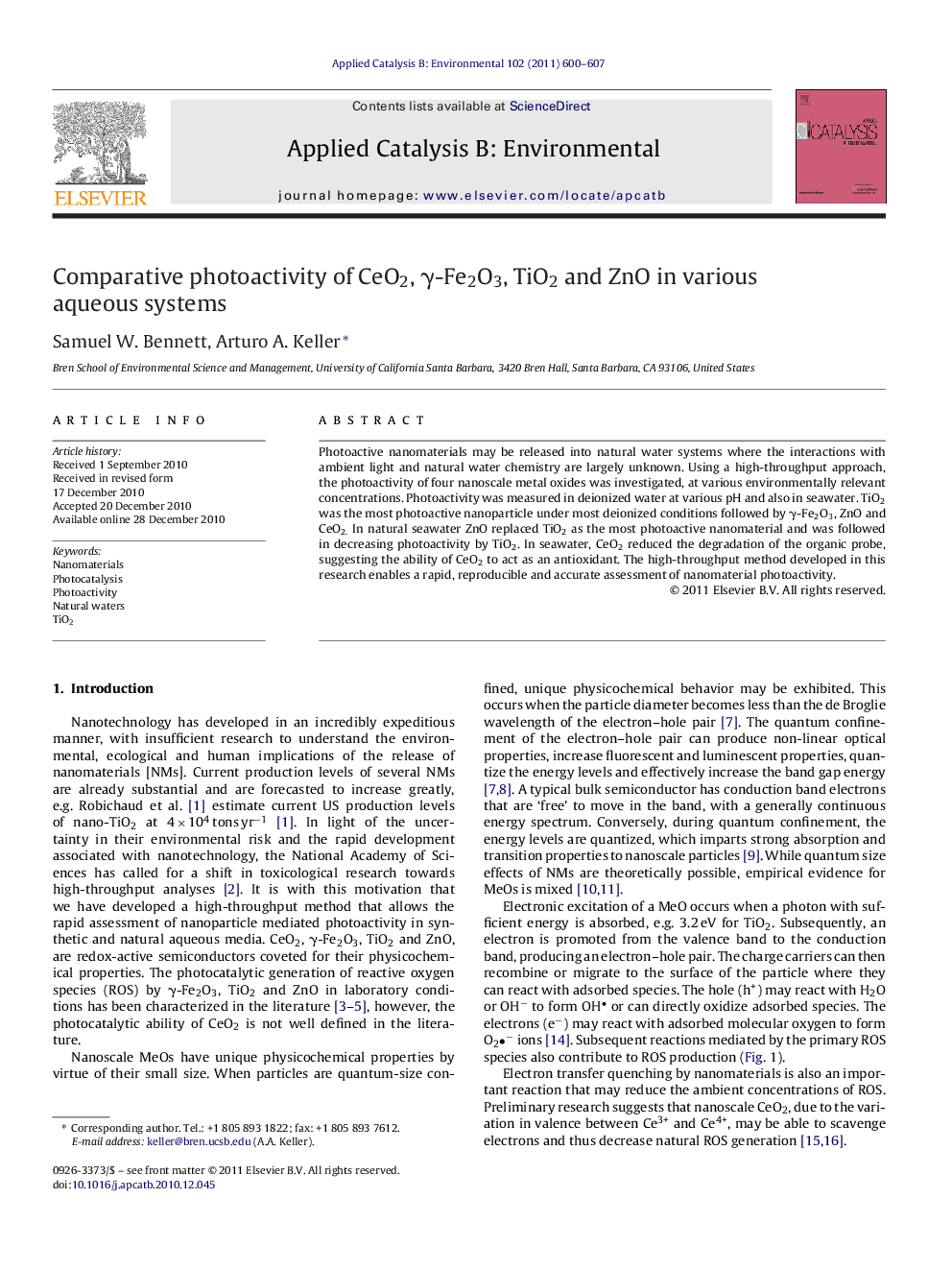| کد مقاله | کد نشریه | سال انتشار | مقاله انگلیسی | نسخه تمام متن |
|---|---|---|---|---|
| 47127 | 46459 | 2011 | 8 صفحه PDF | دانلود رایگان |

Photoactive nanomaterials may be released into natural water systems where the interactions with ambient light and natural water chemistry are largely unknown. Using a high-throughput approach, the photoactivity of four nanoscale metal oxides was investigated, at various environmentally relevant concentrations. Photoactivity was measured in deionized water at various pH and also in seawater. TiO2 was the most photoactive nanoparticle under most deionized conditions followed by γ-Fe2O3, ZnO and CeO2. In natural seawater ZnO replaced TiO2 as the most photoactive nanomaterial and was followed in decreasing photoactivity by TiO2. In seawater, CeO2 reduced the degradation of the organic probe, suggesting the ability of CeO2 to act as an antioxidant. The high-throughput method developed in this research enables a rapid, reproducible and accurate assessment of nanomaterial photoactivity.
Figure optionsDownload as PowerPoint slideResearch highlights▶ Oscillator strength is a suitable a priori tool to assess the photoactivity of metals oxides ▶ A UV-transparent microplate is a rapid, reliable and suitable reaction vessel. ▶ At environmentally relevant concentrations, photoactive metal oxide nanomaterials have limited reactivity.
Journal: Applied Catalysis B: Environmental - Volume 102, Issues 3–4, 22 February 2011, Pages 600–607